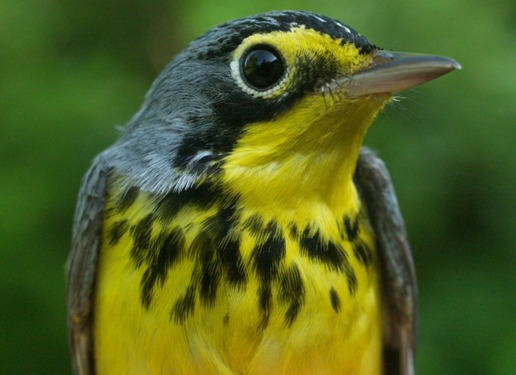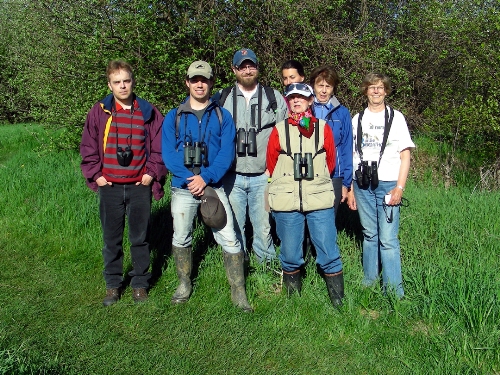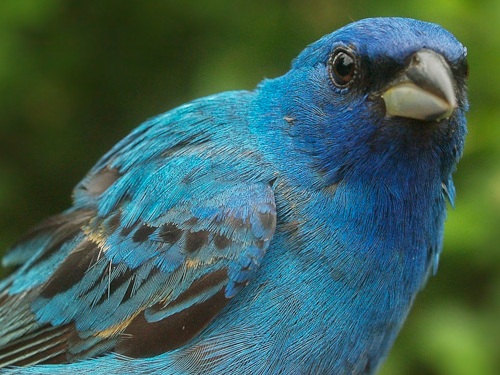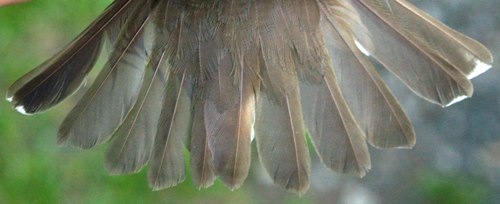|
McGILL BIRD OBSERVATORY |
||||||||||||||||||||||||||||||||||||||||||||||||||||||||||||||||||||||
Welcome
to the McGill Bird Observatory weekly report.
Click here for a complete listing of our archives.
Banders-in-charge: Simon Duval, Gay Gruner Notes: Except for the last day of the week when rain severely limited our net hours, we had a steady movement of birds throughout the week, with between 21 and 45 individuals banded each morning. That was easily enough to push us past the previous spring record of 906 individuals, set last year - a positive trend! The total of 276 repeats to date is also already a season record, and the 99 returns are within striking distance of the record of 113. On the other hand, diversity was surprisingly low this week, with only 80 species observed, compared to a past average in the low 90s for this time of year. However, the total of 140 for the season is still a bit above average. Although we saw fewer species than expected this week, among them was a new record for MBO - Black-bellied Plover. Like some of the other shorebirds on our checklist, it was only seen flying over, but that counts for our purposes. It becomes the 206th species observed at MBO since 2004. What will be next? Also noteworthy this week were this year's first sightings of Great Horned Owl, Willow Flycatcher, Eastern Wood-Pewee, Marsh Wren, and Gray-cheeked Thrush. The latter two were also banded for the first time this year, along with Philadelphia Vireo and Indigo Bunting. We also had our first Blue Jay, Indigo Bunting, and Brown-headed Cowbird returns of 2012. And on a somewhat related note, we heard this week about a Common Grackle we banded at MBO in August 2010, found in Laval on May 6 this year, the report coming (as it often does) thanks to the predatory intervention of a cat.
Aside from mid-May being an exciting time at MBO, it is also an important period for fundraising through the Baillie Birdathon. Again this year we had several efforts dedicated to this cause. As they have been for the past couple of years, the Red-eyed Wearios were by far our most successful fundraisers, this year splitting their effort on Lake Erie in Ontario between Point Pelee (trip report 1) and Long Point (trip report 2). As noted above, the MBO Green Team put in another great effort this year, as usual focusing their search on MBO and adjacent natural areas. Also in southern Quebec, Alison Hackney headed up another foursome of great birders (trip report). Meanwhile, Marcel Gahbauer undertook a solo effort with a challenge to find as many species as possible within a 100 kilometre radius of Calgary, Alberta (126 as it turns out - see the report for details). The Birdathon is MBO's single most important source of funding - if you value our research and enjoy our reports, please consider taking a couple of minutes to click on one of the underlined names in this paragraph to make a contribution through Bird Studies Canada's secure online portal (all Canadian donors will automatically receive a charitable tax receipt from BSC in fall). Your support enables us to continue our migration monitoring programs - thank you in advance!
A substantial invasion of waxwings accounted for 20% of birds banded this week - a single week record in fact. The sustained strong movement of Tennessee Warblers pushed them to 88 individuals banded this spring, a new record high. Three of our traditional late season arrivals made their debut on the top ten list this week - Wilson's Warbler (with nearly as many this week as the past two spring seasons combined), Traill's Flycatcher (with more this week than in 5 of 7 previous entire spring counts), and Blackpoll Warbler (actually a bit less numerous than usual at this point in May). American Goldfinch and Magnolia Warbler slipped down the list slightly from last week, but still had good numbers again this week. Perhaps most interesting though was the count of 12 American Redstarts banded this week, given that on average only 6 have been banded per spring in past years; the season total is now up to 19, which is also a new record. Gray Catbird and Northern Waterthrush round out this week's top ten, padding season totals that are well above average for both species. It's unusual that the ten most abundant species on site remain the same for two weeks in a row, but this is one of those rare occasions. There was a bit of minor shuffling in positions compared to week 8, but no species shifted more than two positions - a remarkable level of consistency! Red-winged Blackbird remained in top spot, as is often the case at this time of year, but Ring-billed Gull has also been the most numerous in week 9 (in 2005, 2006, and 2009), yet was in the lower reaches of the top ten this week. Like last week, Cliff Swallow was notable by its absence from the list, and the continued abundance of Tennessee Warblers is also noteworthy. As always, the spring has flown by. We have just one week left in our Spring Migration Monitoring Program, including our final three days of banding for the season, and another four days of census to round it out. Watch for our final spring report next week, before we take a short hiatus to focus on our summer program, which will centre around our fourth year operating our MAPS (Monitoring Avian Productivity and Survivorship) station.
|




